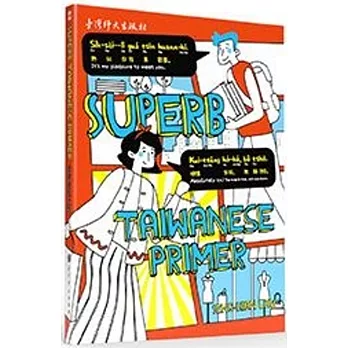序
This book provides composite materials for learning Taiwanese, suitable for both autodidacts and instructed students. The romanization and characters used are standardized orthography promulgated by Taiwan's Ministry of Education, a must-learn system if you aim to pass the proficiency test organized by the Ministry.
You will find musical notes, Do Re and Mi, under each example sentence. They give you a rough grasp of the tone pattern. You can ‘sing’ the sentences along and find them understandable to a native speaker. You may sound like a Taiwanese speaking robot, but never mind! It’s a useful tool before you master all the tones and sandhi tones. They also help you read a sentence without consulting its audio file.
In this book, we do not confine ourselves to ‘proper language’. You also encounter words and phrases deemed impolite or rude on formal occasions. They help you comprehend the language in the everyday life context. Caution: think twice before uttering words or phrases marked ‘vulgar’.
Both teachers and students can use this book flexibly, according to their course designs or learning purposes. For example, you can use each unit of the lexicon as a vocabulary list for reference, and rearrange the words as you see fit. And there is no need to memorize all the words before moving on.
Due to lack of space, this book is limited only to the language, although extralinguistic information of culture, history, customs, etc. is always interesting and linguistically relevant. Teachers and students are encouraged to explore and communicate other aspects of Taiwan, which will eventually benefit your learning and understanding of the Taiwanese language.



 天天爆殺
天天爆殺  今日66折
今日66折 























![幼兒園教保活動課程:幼兒學習評量手冊[113年03月初版9刷]](https://im1.book.com.tw/image/getImage?i=https://www.books.com.tw/img/001/098/43/0010984394.jpg&v=65eae924k&w=110&h=110)

 博客來
博客來 博客來
博客來 博客來
博客來 博客來
博客來 博客來
博客來